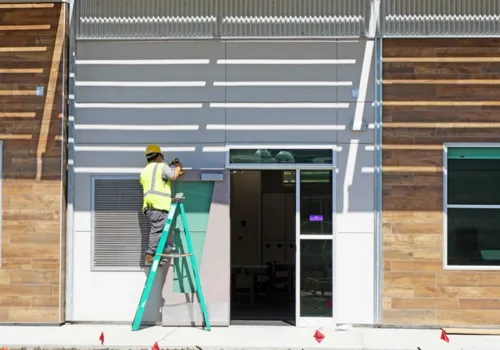
A record-breaking 205 school districts that passed construction bonds last November are now gearing up to compete for state matching funds. The competition stems from Proposition 2, a $10 billion bond for schools and community colleges, which provides only a fraction of the financial aid needed for projects statewide.
Small districts, in particular, face unique challenges with the time-consuming and complex process of securing funds. Julie Boesch, administrator for small district support with the Kern County Superintendent of Schools, highlighted the demanding nature of the process. Boesch, who successfully navigated this system during her tenure as superintendent of Maple Elementary, said, “There were times when I, as superintendent, was spending 90% of my time just on facilities.”
Proposition 2, which passed with 59% voter approval, signals renewed confidence in public schools after the defeat of a $15 billion bond in March 2020 during the pandemic. Rebekah Kalleen, a legislative advocate with the Coalition for Adequate School Housing (CASH), stated, “The funding opportunities will go a long way to ensure that projects are robust and that we’re able to make the repairs and the upgrades that we need.”
Despite its promise, the $8.5 billion allocated to TK-12 districts under Proposition 2 faces a significant hurdle: $4.8 billion is already earmarked for unfunded projects from a previous bond, Proposition 51. These projects, approved before Proposition 2, include over 1,000 plans valued at $1.46 billion for new construction and $3.42 billion for modernization.
Sara Hinkley of UC Berkeley’s Center for Cities + Schools noted the persistent gap in funding: “Because there is so much more demand than there is funding, it’s safe to say that there’s always a long pipeline of projects awaiting allocations.”
Under the new guidelines, districts must submit detailed applications for each project, meeting criteria such as classroom inventory and a five-year master plan. Small districts will receive some support, including a 10% reserved fund and an additional 5% allowance for hiring architects and project managers. However, disparities remain due to differences in property wealth across districts.
Kalleen emphasized the need for districts to act quickly: “Projects are funded based on the date that they’re received by the Office of Public School Construction. So as long as you meet those eligibility criteria, they’re funded in the order that they’re received.”
Boesch offered her advice: “It’s easier to ask permission and move forward instead of having to go back and undo something that may have been done incorrectly.”
The allocation process, involving multiple state agencies, is expected to take two to four years for many districts. This extended timeline disadvantages districts that cannot cover project costs upfront while waiting for state reimbursements.
Hinkley highlighted this issue: “The backlog is so large that state funds often get to districts after projects have already been completed. Districts that do not have sufficient local funds to cover a project’s costs while waiting for the state backlog are at an enormous disadvantage.”
As districts navigate this complex system, the need for efficient processes and equitable funding remains a central concern for California’s educational infrastructure.